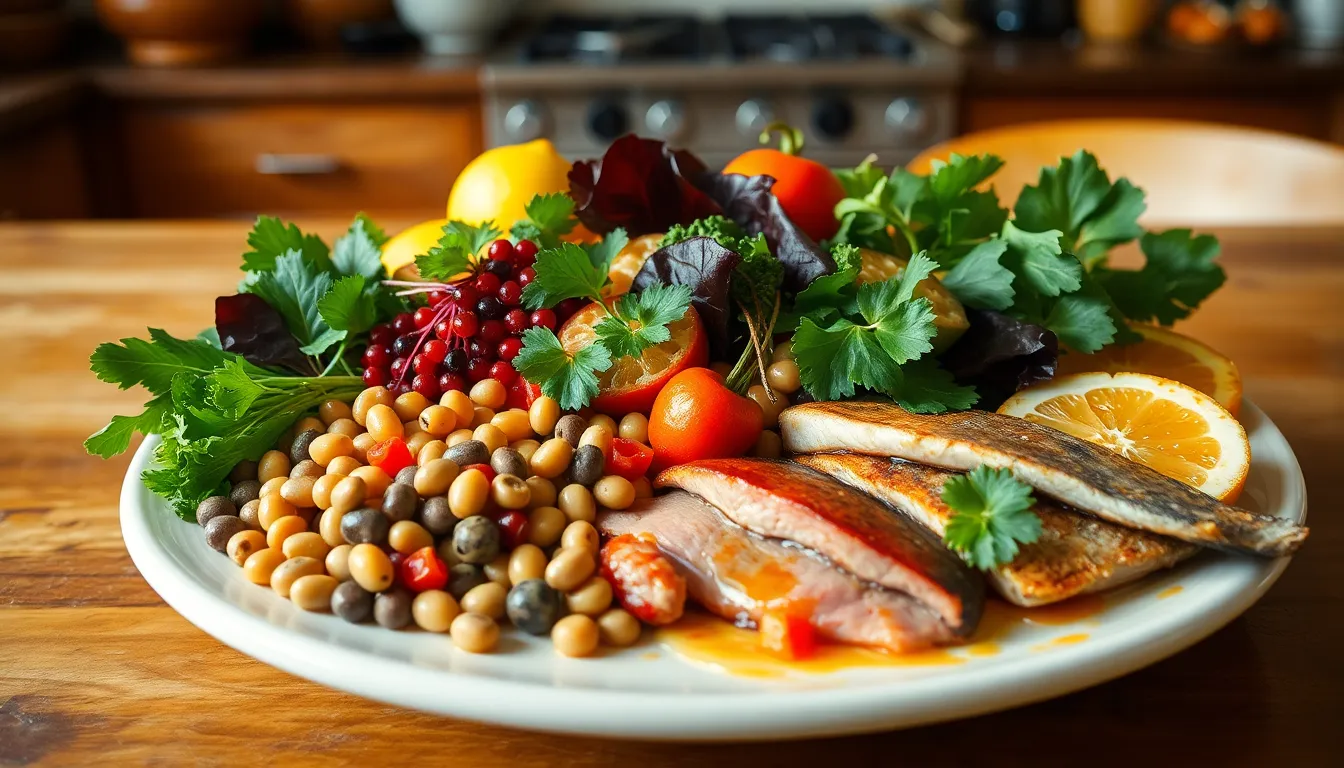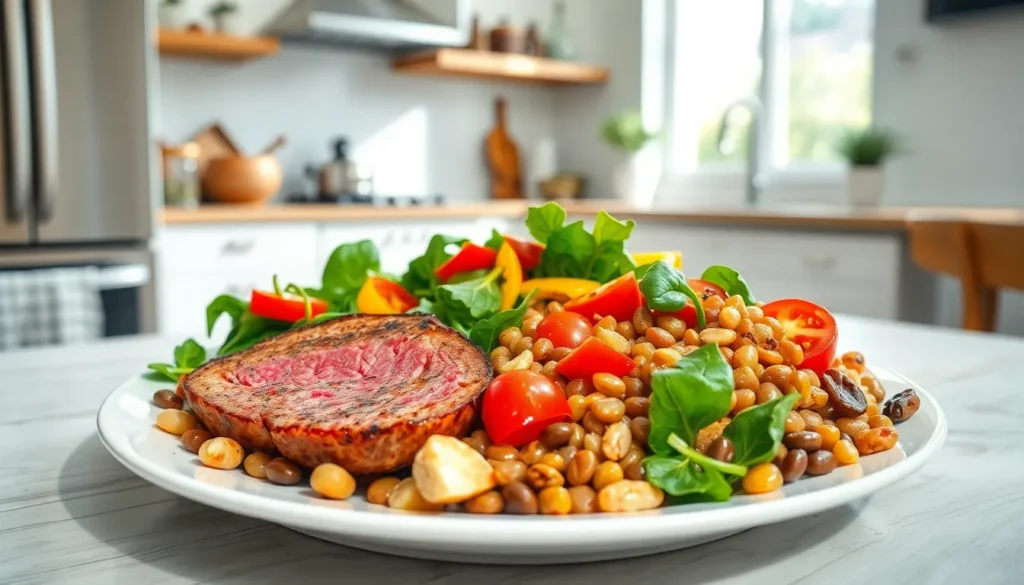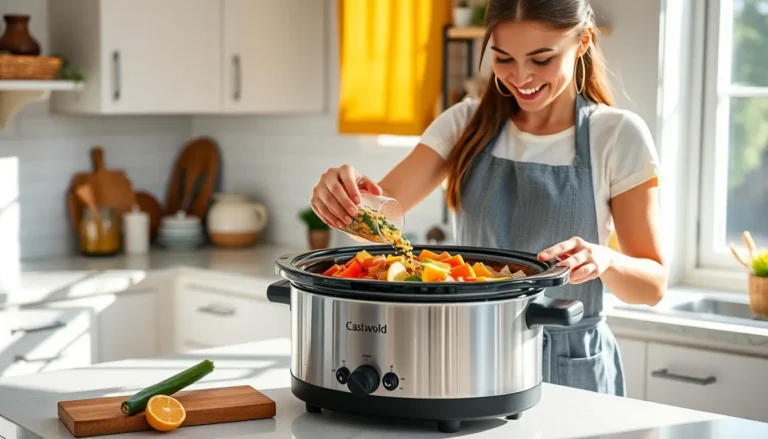Table of Contents
ToggleIron is a crucial mineral that plays a vital role in maintaining overall health. It’s essential for producing hemoglobin, which carries oxygen in the blood. Without adequate iron, fatigue and weakness can creep in, impacting daily life. Fortunately, incorporating iron-boosting foods into one’s diet can help combat deficiencies and enhance energy levels.
From leafy greens to lean meats, a variety of delicious options exist to increase iron intake. Understanding which foods are rich in iron and how to combine them for maximum absorption can make a significant difference. This article explores the best iron-boosting foods and offers tips for making them a staple in any diet. Whether someone is a meat lover or a vegetarian, there’s something here for everyone looking to boost their iron levels.
Understanding Iron and Its Importance
Iron is a crucial mineral that supports overall health, playing a significant role in the formation of hemoglobin. Hemoglobin carries oxygen throughout the body, ensuring that tissues receive the necessary nutrients for function and growth. Insufficient iron intake leads to iron deficiency anemia, marked by symptoms like fatigue, weakness, and impaired cognitive function.
Iron’s benefits extend beyond oxygen transport; it supports immune system functionality and promotes muscle health. Incorporating iron-rich foods into the diet can help maintain optimal iron levels and enhance energy. This is particularly important for individuals with increased iron needs, such as pregnant women, young children, and athletes.
Iron comes in two forms: heme and non-heme. Heme iron, found in animal products like red meat and poultry, is absorbed more efficiently than non-heme iron, which occurs in plant-based foods like legumes, nuts, and leafy greens. Combining these iron sources with vitamin C-rich foods can improve absorption, making dietary choices crucial for optimal health.
Incorporating a variety of iron-boosting foods ensures robust iron status, contributing to overall well-being and vitality.
Benefits of Iron-Booster Foods

Iron-boosting foods offer numerous health advantages, particularly in improving energy levels and supporting immune function. Incorporating these foods into the diet significantly contributes to overall well-being.
Enhancing Energy Levels
Enhancing energy levels stands as one of the primary benefits of iron-rich foods. Adequate iron intake boosts hemoglobin production in red blood cells, which increases oxygen transport throughout the body. Increased oxygen availability improves stamina and reduces fatigue. Foods high in heme iron, such as lean meats and fish, facilitate quicker iron absorption compared to non-heme sources. Pairing non-heme iron sources like legumes and dark leafy greens with vitamin C-rich foods, such as citrus fruits or bell peppers, further optimizes absorption and energy-enhancing effects.
Supporting Immune Function
Supporting immune function is another essential benefit of iron-boosting foods. Iron plays a crucial role in the development and function of immune cells, particularly lymphocytes, which are vital for the body’s ability to fight infections. Sufficient iron levels strengthen the immune response, reducing susceptibility to illness. Animal-based iron sources, such as poultry and red meat, provide a more readily available form of iron, bolstering immune defense. Incorporating a variety of iron-rich foods into daily meals helps maintain robust immune health, particularly for those with higher iron requirements, like pregnant women and growing children.
Top Iron-Booster Foods
Incorporating a variety of iron-boosting foods into the diet enhances overall health by ensuring adequate iron levels. Both animal-based and plant-based sources provide essential iron, aiding in the prevention of deficiency and promoting optimal energy levels.
Animal-Based Sources
Animal-based sources of iron primarily contain heme iron, which absorbs more efficiently. Key sources include:
- Red Meat: Beef and lamb offer high levels of heme iron, with approximately 2.7–3.5 mg per 3-ounce serving, contributing significantly to daily iron needs.
- Poultry: Chicken and turkey, especially dark meat, provide about 1.1 mg per 3-ounce serving. These options are versatile and can be easily incorporated into various dishes.
- Fish and Seafood: Shellfish, such as oysters and clams, contain 28 mg and 23 mg of iron per 3-ounce serving, respectively. Fatty fish like salmon also provide iron along with omega-3 fatty acids, promoting heart health.
- Organ Meats: Liver, particularly beef liver, boasts approximately 5 mg of iron per ounce, making it one of the richest sources available.
Plant-Based Sources
Plant-based sources contain non-heme iron, which is less readily absorbed without pairing with vitamin C-rich foods. Important options include:
- Legumes: Lentils and chickpeas provide around 3.3 mg and 2.9 mg of iron per half-cup, respectively. They serve as excellent protein sources alongside iron, suitable for various diets.
- Leafy Greens: Spinach and Swiss chard deliver about 3.6 mg and 3.4 mg of iron per cooked half-cup. Pairing these greens with citrus juices enhances iron absorption.
- Nuts and Seeds: Pumpkin seeds and cashews offer approximately 2.5 mg and 1.7 mg of iron per ounce, respectively. Snacking on these options supports daily iron intake.
- Fortified Foods: Many cereals and bread products are fortified with iron, providing about 4.5 mg in a single serving. Checking labels can ensure these fortified foods contribute to iron needs.
Offering a combination of these animal-based and plant-based sources ensures a well-rounded approach to achieving optimal iron levels.
Tips for Maximizing Iron Absorption
Maximizing iron absorption enhances overall health and energy levels. Strategic food combinations and avoiding certain items can significantly impact iron intake.
Combining Foods for Better Absorption
Combining iron-rich foods with specific nutrients promotes optimal absorption. Pair heme iron sources, like red meat and fish, with vitamin C-rich foods, such as citrus fruits or bell peppers. Vitamin C enhances the absorption of non-heme iron from plant-based sources. Combine lentils, beans, or spinach with tomatoes or broccoli for improved non-heme iron uptake. Consuming meals including both heme and non-heme iron sources ensures diverse nutrient intake, further aiding overall health.
Foods to Avoid
Certain foods can inhibit iron absorption. Avoid consuming calcium-rich foods, like dairy products, during meals high in iron, as calcium competes with iron for absorption. Foods containing phytates, such as whole grains and legumes, also limit iron absorption; soaking or sprouting these items can reduce phytate levels. Additionally, tannins found in tea and coffee can hinder iron absorption, so opt for water or herbal teas with meals. Limiting these blockers enhances iron availability and maximizes the benefits of iron-boosting foods.
Incorporating iron-boosting foods into daily meals is essential for maintaining optimal health. By prioritizing both heme and non-heme sources, individuals can effectively enhance their iron levels and combat deficiency.
Pairing these foods with vitamin C-rich options further maximizes absorption, ensuring the body receives the necessary nutrients for energy and immune support.
Awareness of foods that inhibit iron absorption also plays a crucial role in dietary planning. With mindful choices and strategic combinations, anyone can enjoy the benefits of a well-rounded diet that supports iron intake and overall well-being.







